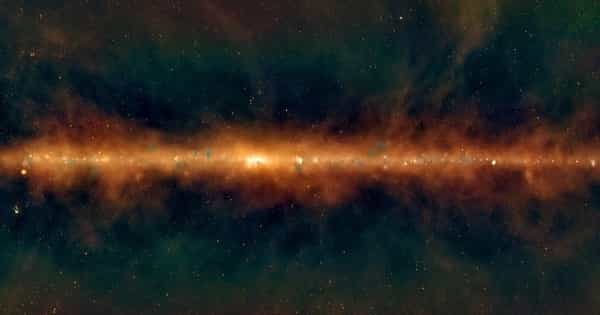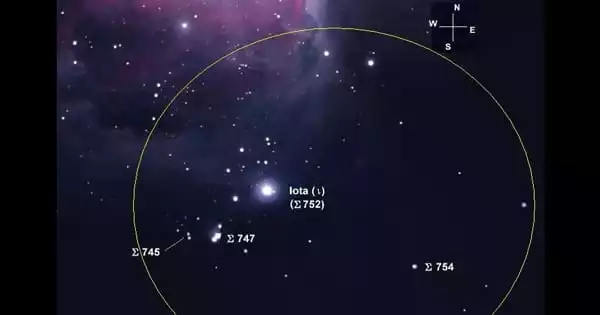According to new research published Wednesday, astronomers have detected and identified a burst of cosmic radio waves within our solar system for the first time, shedding new light on one of the Universe’s mysteries. The origin of powerful fast radio bursts (FRBs), which are intense flashes of radio emission that last only a few milliseconds, has perplexed scientists since they were discovered a little more than a decade ago.
A team of astronomers discovered a mysterious radio signal emanating not far from the center of our own Milky Way galaxy using the Australian Square Kilometer Array Pathfinder (ASKAP), an extremely sensitive radio telescope, according to ScienceAlert.
“We presented the discovery and characterization of ASKAP J173608.2-321635: a highly polarized, variable radio source located near the Galactic Center with no clear multi-wavelength counterpart,” according to a preprint paper about the research that was accepted for publication in The Astrophysical Journal.
Mysterious, intense blasts of radio energy have been detected from within our own galaxy, astronomers have said. A team of astronomers has discovered a mysterious radio signal emanating not far from the center of our own Milky Way galaxy.
As ScienceAlert points out, there is a chance that the signal is coming from a known type of cosmic object, but the signal’s highly unusual radio wave signatures are perplexing scientists, making it nearly impossible to account for — yet another indication that our knowledge of our own galaxy remains tantalizingly incomplete.
FRBs, or fast radio bursts, are only a fraction of a second long but can be 100 million times more powerful than the Sun. Despite their ferocity, their origins are largely unknown. For the first time, astronomers have observed a fast radio burst in our own Milky Way galaxy. They could finally help solve the mystery of where they came from, as well as being closer than any FRB ever detected before.
Scientists have had difficulty tracing the origins of such blasts because they are so brief, unpredictable, and originate so far away. It is obvious that they must have formed in some of the most extreme conditions possible in the universe, with proposed explanations ranging from dying stars to alien technology.

Elusive Signals
The signal was also extremely difficult to locate. It appeared 13 times in ASKAP observations between April 2019 and August 2020, but subsequent attempts to confirm its existence using telescopes around the world were unsuccessful. However, it began to appear again in Australia Telescope Compact Array (ATCA) and South African MeerKAT radio telescope observations earlier this year, according to the researchers.
Even more perplexing, the enigmatic signal did not appear in X-ray or near-infrared observations, implying that its origin is unlikely to be a flaring star or a close binary system. According to scientists, it is also unlikely to be a pulsar, a dying star that lights up the galaxy like a lighthouse with highly magnetized emissions.
To put it another way, the researchers are perplexed. None of their explanations can fully explain it, prompting them to speculate in their paper that “ASKAP J173608.2-321635 may represent part of a new class of objects being discovered through radio imaging surveys.” However, the researchers believe that there may be other signals similar to it. With more samples, we might be able to come up with a plausible explanation for the radio source.
The magnetar signal is the most powerful radio blast ever recorded in our galaxy. However, in comparison to other fast radio bursts, this one was quite weak, with only a thousandth of the energy of a typical burst from outside the Milky Way.
Researchers believe that weaker bursts will occur more frequently than stronger bursts; we just won’t be able to detect them if they are too far away. Taken together, the new findings strongly suggest that magnetars are responsible for at least some of the distant radio bursts.
The closest match is a mysterious type of object known as a galactic center radio transient (GCRT), which is a rapidly glowing radio source that brightens and decays near the Milky Way’s center over the course of a few hours. So far, only three GCRTs have been confirmed, and they all appear and disappear much faster than this new ASKAP object. The few known GCRTs, on the other hand, shine with the same brightness as the mysterious signal, and their radio flare-ups are never accompanied by X-rays.
















